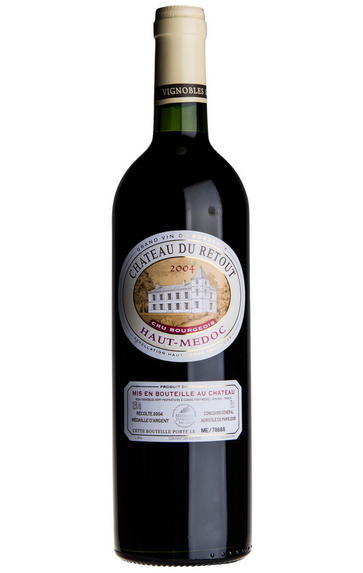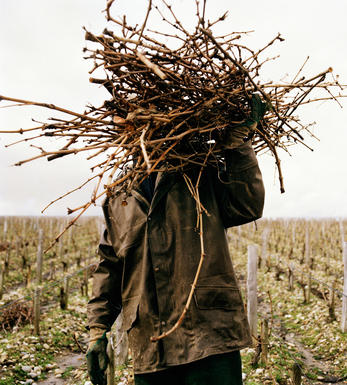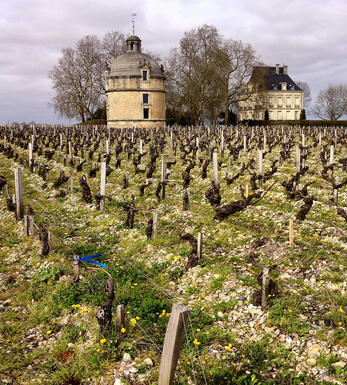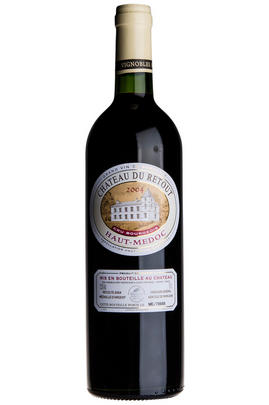
About this WINE

Ch. du Retout
In the 1950s, three devastated estates including Château du Retout, were purchased by the Kopp family, and replanted into vineyards. Father, daughter and son-in-law now manage all three estates.
Château du Retout has thirty four hectares of vineyard: thirty two hectares are located in the Haut-Médoc appellation and the other two hectares consist of mixed wine varieties. Its location is on a gravel covered rise, with an old mill sat at the highest point, in the middle of the vineyard.
The grape varieties are made up of: 68% Cabernet Sauvignon, 25% Merlot and 7% Petit Verdot and the average age of the vines are around thirty years.
Château du Retout applies the principles of sustainable agriculture, using natural fertilisers like manure and compost. The grapes are harvested both mechanically and by hand. They are fermented for three to five weeks and then barrel aged in French oak barrels for twelve months.

Haut-Medoc
Despite being as visually unprepossessing as the rest of the Médoc (despite its grandiose châteaux) this large red-wine appellation of Haut-Médoc is home to some of the world’s greatest wines. Its 4,500 hectares of vineyards form a largely continuous strip that follows the Gironde from St Seurin-de-Cadourne, just north of St Estèphe, to Blanquefort in the northern suburbs of Bordeaux.
All the great communes of the Left Bank fall within its boundaries: Margaux, St Julien, Pauillac and St Estèphe, as well as the up and coming Moulis and Listrac. These are labelled under their own, more illustrious and expensive appellation names. Châteaux labelled simply as Haut-Médoc rarely reach such heights, but nevertheless offer consistently good quality and offer some of the best value in Bordeaux.
Haut-Médoc wines tend to be firm and fine with generous fruit and a nice minerality – what many would consider ‘classic Claret’. They come from loftier vineyards and offer higher quality and more complexity than those labelled simply as ‘Médoc’. Almost all wines are a blend of the principal varieties – Cabernet Sauvignon, Merlot and Cabernet Franc – which helps producers hedge their bets if the slightly capricious climate causes one variety to fail. Small amounts of Petit Verdot, Malbec and even Carmenère are also used.
The higher proportion of sand and gravel to the south tends to produce finer wines, while the heavier clay and gravel north of Margaux yields sturdier examples. The best Haut-Médocs are found north of Ludon, a village just below Margaux. These include five classified Growths: Third Growth Ch. La Lagune, underperforming Fourth Growth Ch. la Tour Carnet and Fifth Growths Ch. Cantemerle, Ch. Camensac and Ch. Belgrave – as well as a number of fine Cru Bourgeois. Ageing ability varies but the lesser wines are usually delicious after three to four years, lasting around a decade, while the Cru Classés have a drinkability window of around six to 15 years.
Recommended Châteaux (labelled as Haut-Médoc): Ch. Beaumont, Ch. Belgrave, Ch. Cantemerle, Ch. Peyrabon

Cabernet Sauvignon Blend
Cabernet Sauvignon lends itself particularly well in blends with Merlot. This is actually the archetypal Bordeaux blend, though in different proportions in the sub-regions and sometimes topped up with Cabernet Franc, Malbec, and Petit Verdot.
In the Médoc and Graves the percentage of Cabernet Sauvignon in the blend can range from 95% (Mouton-Rothschild) to as low as 40%. It is particularly suited to the dry, warm, free- draining, gravel-rich soils and is responsible for the redolent cassis characteristics as well as the depth of colour, tannic structure and pronounced acidity of Médoc wines. However 100% Cabernet Sauvignon wines can be slightly hollow-tasting in the middle palate and Merlot with its generous, fleshy fruit flavours acts as a perfect foil by filling in this cavity.
In St-Emilion and Pomerol, the blends are Merlot dominated as Cabernet Sauvignon can struggle to ripen there - when it is included, it adds structure and body to the wine. Sassicaia is the most famous Bordeaux blend in Italy and has spawned many imitations, whereby the blend is now firmly established in the New World and particularly in California and Australia.



Buying options
Add to wishlist
wine at a glance
Delivery and quality guarantee